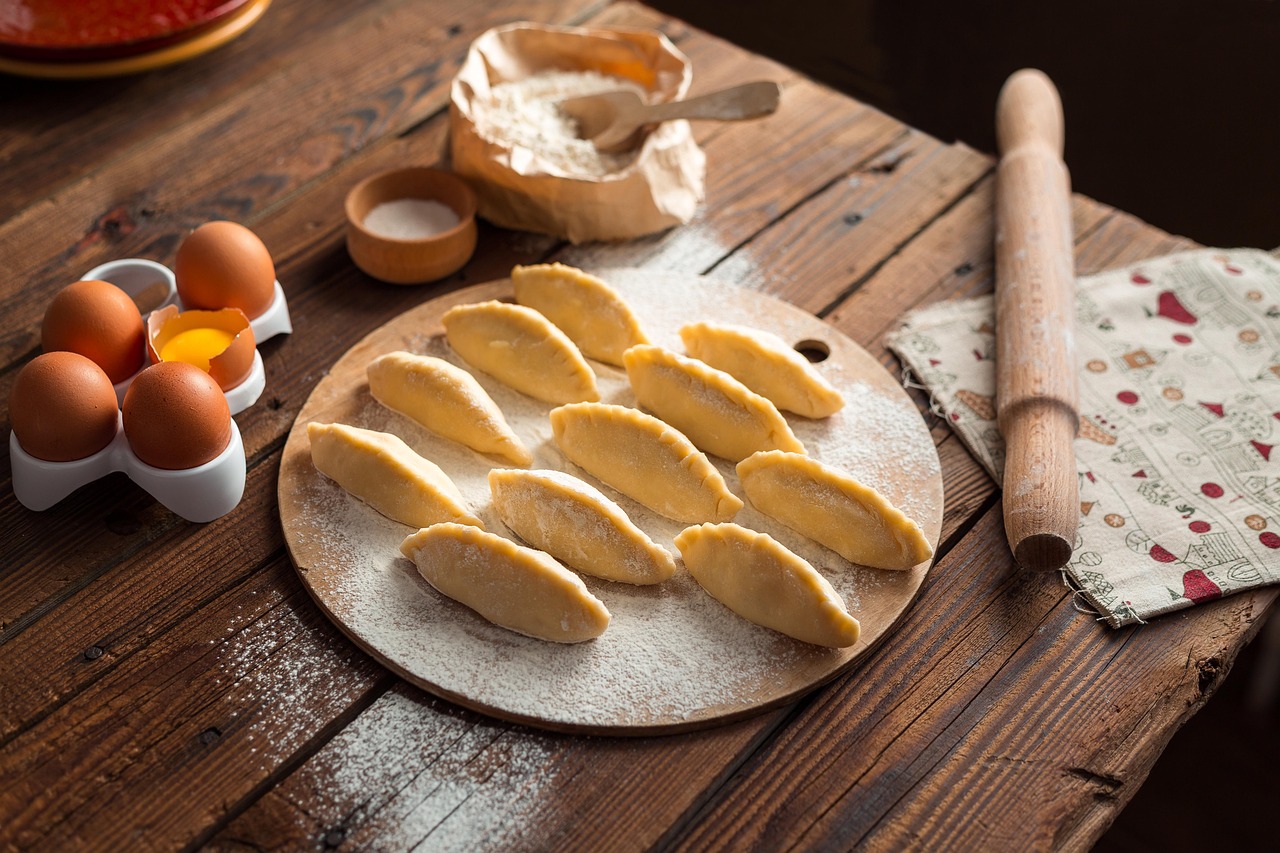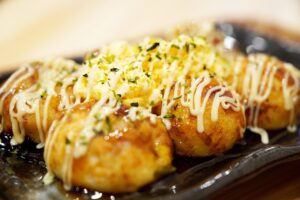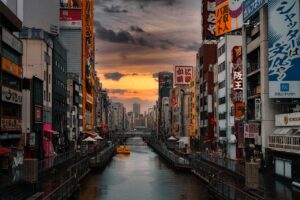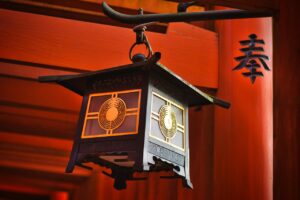Welcome to Osaka, a city that dances to its own beat, a place where the air crackles with energy and the aroma of incredible food seems to rise from the very pavement. At the heart of this vibrant metropolis lies the Shinsaibashi district, a dazzling artery of commerce and culture that pulses from morning until long after the moon has claimed the sky. It’s a river of people flowing beneath a vast covered arcade, flanked by towering department stores, chic boutiques, and glowing walls of neon that paint the night in electric hues. For any traveler, Shinsaibashi is an essential experience, a sensory feast of fashion, sound, and relentless motion. But for the Muslim traveler, a fundamental question often arises amidst this beautiful chaos: Where can I eat? In a country celebrated for its culinary traditions, navigating dietary requirements can feel like a daunting task. Yet, here in the kinetic heart of Osaka, a warm and delicious answer is unfolding. The city’s legendary hospitality is extending its arms wider, creating a burgeoning scene of Halal-certified and Muslim-friendly restaurants that offer not just sustenance, but a genuine taste of Japan and the world, all prepared with care and respect. This guide is your compass, pointing you toward the soulful, the savory, and the spectacular, ensuring your adventure in Shinsaibashi is as nourishing for the body as it is for the spirit.
For a truly unforgettable taste of Osaka’s vibrant food scene, be sure to explore the incredible Wagyu street food in Dotonbori.
The Electric Heartbeat of Osaka

Before we dive into the food, let’s first talk about the atmosphere. Walking through Shinsaibashi-suji Shopping Street is like being carried along by a wave of pure, vibrant energy. This covered arcade, stretching more than half a kilometer, forms its own unique world, protected from sun and rain. Overhead, banners and seasonal decorations splash the space with color, while lively store announcements, pop music, and the hum of countless conversations combine into a distinctive urban soundtrack. On both sides, shops compete for your attention. There are established department stores like Daimaru, with elegant window displays showcasing the height of global fashion. Then, fast-fashion retailers draw crowds of trendy youth. You’ll discover quirky souvenir shops stocked with everything from ornate chopsticks to fun novelty socks, alongside gleaming drugstores crammed with Japanese skincare products beloved worldwide. The crowd is a captivating mix of locals running errands, stylish shoppers, and wide-eyed tourists from all over the world, all moving together in a courteous, well-orchestrated flow. Just west of the main arcade is Amerikamura, or ‘Amemura,’ Osaka’s take on Harajuku. Here, the atmosphere shifts noticeably. Narrower streets, buildings covered in vivid street art, and shops selling vintage clothes, vinyl records, and counter-culture items create a space buzzing with youthful creativity. It’s a place where you can feel the city’s artistic heartbeat. As day fades to evening, the area doesn’t quiet down; it transforms. Neon signs, which are mere decorations by day, ignite to flood the streets with a futuristic glow. This is the vibrant scene you’ll explore—a thrilling maze of sights and sounds. And within this electrifying setting, you’ll find tranquil, welcoming spots serving delicious Halal meals.
A Taste of Japan, Certified Halal
For many Muslim visitors to Japan, the ultimate culinary goal is to savor authentic Japanese cuisine. The delicate broths, expertly cooked noodles, and harmonious blend of flavors—it’s truly an art. Traditionally, finding Halal versions of iconic dishes like ramen or yakiniku posed a significant challenge due to the frequent use of pork-based broths, mirin, and sake in their recipes. However, this is changing thanks to innovative restaurateurs dedicated to recreating these beloved dishes fully in line with Halal standards, without sacrificing any flavor. They serve as culinary bridges, enabling everyone to enjoy Japan’s most celebrated food experiences.
Naritaya Osaka Minami: Enjoying Soulful Ramen Worry-Free
Tucked away on a side street just a short walk from the main Shinsaibashi area, Naritaya Osaka Minami is more than a restaurant—it’s a landmark for Muslim travelers. The moment you glimpse its modest facade, a sense of relief and excitement washes over you. This is a place committed to offering an authentic Japanese experience. The cozy, intimate setting, with warm wooden counters and a layout typical of ramen shops across Japan, creates an atmosphere that feels both genuine and welcoming.
The Bowl That Calls You
The highlight here is undoubtedly their Mazesoba. Unlike traditional ramen served in broth, Mazesoba is a brothless ramen where thick, chewy noodles are presented with a rich, savory sauce at the bowl’s base, accompanied by various toppings. At Naritaya, the Halal version is a triumph of texture and flavor. The noodles are perfectly al dente, providing a delightful chewiness. The sauce is a complex, umami-rich blend made from a chicken and vegetable base, seasoned with a special soy sauce mix that is, of course, alcohol-free. Toppings include generous portions of seasoned minced chicken, bright green spring onions, crunchy bamboo shoots, shredded nori seaweed, and a flawlessly soft-boiled egg with a golden yolk ready to coat every noodle strand. Directions are straightforward: mix it all thoroughly and enjoy. Each bite is a harmony of flavors—the savory chicken, the sharpness of the onion, the earthiness of the seaweed, and the creamy richness of the egg yolk. It’s a deeply satisfying dish that warms you from within.
Beyond Noodles
While Mazesoba is a must, Naritaya’s menu features other delightful Japanese classics. Their Karaage—Japanese fried chicken—is outstanding. The chicken is marinated in a Halal-certified blend of soy sauce, ginger, and garlic, then coated in a light batter and fried to a perfect golden crisp. It’s wonderfully crunchy outside while juicy and tender inside, making it a perfect side to share or a main dish alongside steamed rice. They also serve Halal gyoza, pan-fried dumplings filled with a savory chicken and vegetable mix. The bottoms are crisped to perfection while the tops remain steamed, offering a delightful contrast in texture. These dishes demonstrate that Halal Japanese cuisine is not about limitations but about creative and respectful adaptation.
A Refuge in the City
One of Naritaya Osaka Minami’s most thoughtful and important features is the dedicated prayer space on the second floor. For Muslim travelers managing prayer times amid a busy sightseeing schedule, this facility is invaluable. The space is clean, quiet, and outfitted with prayer mats and a wudu (ablution) area. It elevates the restaurant beyond just a dining spot to a true sanctuary—a place to pause, reflect, and fulfill religious duties comfortably and privately before returning to the lively energy of Shinsaibashi. The staff are warm and experienced with international guests, ensuring the entire experience is smooth and stress-free.
Spice Routes and Silk Roads: Global Flavors in Shinsaibashi
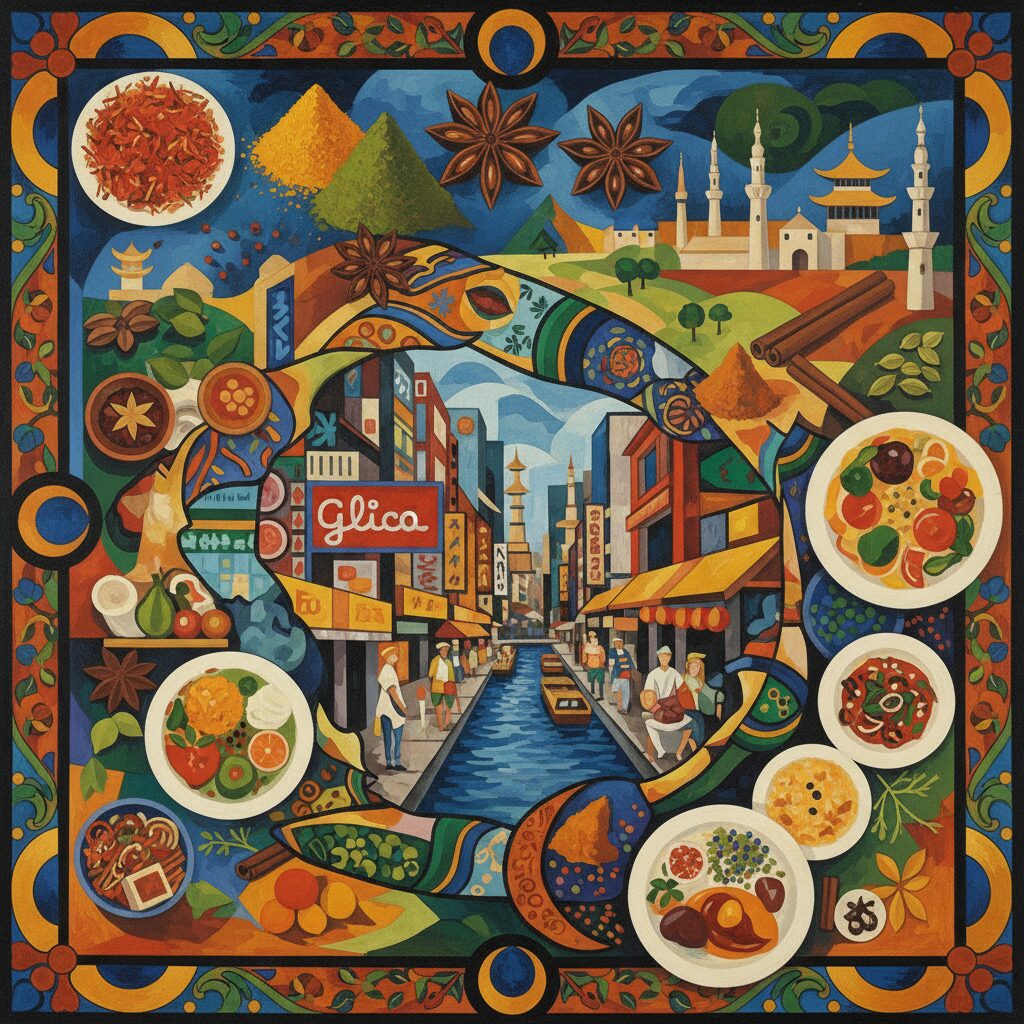
Osaka’s identity as a port city has long made it a cultural and culinary crossroads. This international influence is vividly reflected in the Halal food scene around Shinsaibashi. While enjoying Japanese cuisine is often the focus, sometimes the heart yearns for the familiar, comforting tastes of home, or perhaps the bold, aromatic spices of distant lands. This area excels in meeting those desires, offering a rich variety of global cuisines that cater to the Muslim community, each dish prepared by chefs who infuse their heritage and passion into their cooking. From the fragrant biryanis of South Asia to the smoky kebabs of the Mediterranean, these restaurants serve as culinary embassies, inviting diners on a delicious world tour.
Ali’s Kitchen: A Pakistani Feast for the Senses
Ask anyone in Osaka’s Muslim community for an authentic Pakistani dining experience, and they’ll direct you to Ali’s Kitchen. Led by the charismatic and welcoming Mr. Ali, this restaurant has become a beloved institution. It feels like a home away from home, even if you are thousands of miles away. The warm, inviting decor is adorned with cultural artifacts and textiles that add vibrant color and character. Yet the true magic happens in the kitchen, where traditional recipes come alive with a steadfast dedication to genuine flavor.
The Symphony of Spice
Ali’s Kitchen’s menu is a tribute to Pakistani culinary traditions. Their Biryani is legendary—not just a simple mix of rice and meat, but a carefully crafted masterpiece. Long-grain basmati rice is steamed to fluffy perfection, with each grain separate and fragrant with whole spices such as cardamom, cloves, and cinnamon. The chicken or mutton is marinated in a blend of yogurt and spices and cooked until tender enough to fall off the bone. These elements are layered and slow-cooked together, allowing their flavors to harmonize beautifully. Served in generous portions, garnished with fried onions and fresh cilantro, it is truly a regal dish. No meal here is complete without their freshly baked Naan bread, made in a traditional tandoor oven. It arrives at the table puffed and steaming, with a charred exterior and a soft, pillowy inside—perfect for scooping up rich, complex curries like buttery Chicken or robust Mutton Karahi. Each dish exemplifies the art of spice blending, delivering bold yet balanced layers of flavor.
An Oasis of Hospitality
What truly distinguishes Ali’s Kitchen is its hospitality. Mr. Ali frequently moves among the tables with a warm smile, checking on guests and sharing stories. This personal touch makes every visitor feel like a cherished friend. The restaurant is a gathering place for the local Muslim community, where families and friends often share large platters in a lively, friendly atmosphere. It is a place of connection and community, offering tourists a heartfelt glimpse into Osaka’s multicultural fabric alongside a soul-satisfying meal.
Cafe Bosphorus: A Turkish Delight in Namba
Just a short walk from Shinsaibashi’s southern end, in the vibrant Namba district, lies a charming gateway to Turkey. Cafe Bosphorus provides an authentic taste of Turkish and Mediterranean cuisine within a cozy, atmospheric setting. The space is beautifully decorated with Turkish lamps casting a warm, mosaic-like glow, along with intricate carpets and décor that transport you to an Istanbul café. It’s the perfect spot for a relaxed dinner after a day of exploring and shopping.
Grills and Gratitude
Grilling is at the heart of Turkish cuisine, and Cafe Bosphorus excels in this art. Their Adana Kebab—minced lamb mixed with spices and grilled on a wide skewer—is juicy, flavorful, and perfectly smoky. The Shish Kebab, featuring tender, marinated cubes of chicken or beef, is also a favorite. Kebabs are generally served with fluffy rice, grilled vegetables, and a fresh salad. Before your main course, be sure to enjoy a meze platter. This assortment of small appetizers is ideal for sharing and includes classics like creamy chickpea and tahini Hummus; smoky Baba Ghanoush, made from eggplant; and freshly baked, warm pita bread that’s simply irresistible. It’s a light, healthy, and wonderfully social way to begin your meal.
Sweet Endings and Strong Coffee
Save room for the dessert. The Baklava here is authentic and delectable, with flaky phyllo layers, chopped nuts, and a sweet syrup that’s perfectly balanced, never overly sweet. Pair it with a cup of traditional Turkish coffee, served in a small, ornate cup—strong, unfiltered, and rich in flavor. It’s the ideal way to conclude a delightful meal. The combination of the sweet pastry and robust coffee is a timeless classic, leaving a memorable finish to your Turkish culinary journey in the heart of Osaka.
Navigating Your Culinary Journey: Practical Tips for Muslim Travelers
Discovering great Halal restaurants is essential for a successful trip, but having a bit of extra knowledge can make your experience in and around Shinsaibashi even more seamless. Being well-prepared lets you explore confidently, knowing you can easily meet your dietary and religious requirements. From locating quiet spots for prayer to interpreting food labels at convenience stores, these tips are meant to enhance your journey.
Beyond Dining: Prayer Spaces and Supplies
Finding Time for Prayer
While some Halal restaurants, such as Naritaya, provide prayer facilities, you might need a place to pray at other times during the day. A handy tip is to download a Qibla finder app on your phone, which can be invaluable when you’re in an unfamiliar city. Although Osaka doesn’t have prayer rooms in every department store like some Southeast Asian cities, awareness is increasing. For a larger, dedicated prayer space, the Osaka Masjid serves as the main mosque, located in Nishiyodogawa ward—a bit of a train ride from Shinsaibashi—but it’s a great place to connect with the local Muslim community, especially for Friday prayers. For daily prayers while out, seek quiet corners in public parks or use fitting rooms in larger, less crowded clothing stores after asking for permission. Japanese people are usually very respectful of privacy, so a discreet prayer will likely go unnoticed.
Halal Groceries and Souvenirs
Sometimes you just want a quick snack or drink. Navigating convenience stores (konbini) can be challenging. Although full Halal certification on snacks is still uncommon, many items are incidentally Muslim-friendly. Look for rice balls (onigiri) with fillings like salted plum (ume) or kelp (kombu), but avoid those with tuna-mayo or meat, as their sauces might contain alcohol derivatives. Plain rice crackers, nuts, and fruit are always safe choices. When checking ingredient labels, it’s useful to recognize the kanji for pork (豚), alcohol (酒), and mirin (みりん). A translation app with a camera feature can be invaluable in the snack aisle. For more substantial grocery shopping or to find Halal-certified Japanese products for souvenirs, you may need to visit specialty international food stores, often located in basement food halls of major department stores or in neighborhoods with larger international communities.
Weaving a Perfect Day in Shinsaibashi

Imagine a day where world-class shopping, vibrant culture, and delicious, worry-free Halal food blend together seamlessly. Here’s how to incorporate these incredible restaurants into a perfect Shinsaibashi itinerary.
Morning Buzz and Retail Therapy
Begin your day on Midosuji Avenue, the grand boulevard running parallel to the main shopping arcade. This is Osaka’s version of the Champs-Élysées, lined with flagship stores of luxury brands and stunning contemporary architecture. Bask in the morning light, enjoy some window shopping, and soak up the sophisticated atmosphere. As the crowds grow, immerse yourself in the Shinsaibashi-suji arcade. Take your time exploring the side streets, and lose yourself in the endless retail possibilities. This is the ideal moment to hunt for unique souvenirs, discover the latest Japanese fashion trends, and browse multi-story pharmacies for coveted beauty products.
A Midday Ramen Refuel
By early afternoon, your feet will be tired and your shopping bags full. The excitement of the crowds, while invigorating, can also be draining. This is the perfect opportunity to escape to Naritaya Osaka Minami. Slip into the quiet side street and settle at the counter. Ordering a steaming bowl of Mazesoba or a plate of crispy Karaage will feel like the ultimate reward. It’s a chance to recharge, savor an authentic Japanese meal, and perhaps use the prayer room to recenter yourself before heading back out for round two.
Afternoon Exploration in Amerikamura
With renewed energy, it’s time to explore Shinsaibashi’s more eclectic neighbor, Amerikamura. Just a five-minute walk from the main arcade, this neighborhood is a visual feast. Admire the giant murals on building walls, observe the eclectic street style of local youth, and browse shops offering everything from vintage American clothing to handmade accessories by local designers. It’s the perfect place to people-watch from a café and experience a different facet of Osaka’s vibrant youth culture.
Evening Glow and a Global Dinner
As dusk falls, head south toward the Dotonbori Canal. This is when the area truly comes alive. Secure a spot on the Ebisu Bridge and witness one of Japan’s most iconic sights: the Glico Running Man sign and the hundreds of other neon advertisements sparkling and reflecting off the water below. The atmosphere is electric. After soaking it all in, it’s time for dinner. Choose from global flavors: head to Ali’s Kitchen for a hearty and welcoming Pakistani meal, or make your way to Cafe Bosphorus for a relaxing and flavorful Turkish dinner. Both offer a perfect, comforting conclusion to a day full of sensory delights, allowing you to unwind and reflect on your Osaka adventure.
A Welcoming Table Awaits
Osaka is a city that proudly embraces ‘kuidaore‘—a phrase that roughly means ‘eating until you drop.’ It reflects the city’s deep and passionate love for food. For too long, Muslim travelers may have felt they could only watch this feast from afar. But that is no longer true. The growing number of Halal and Muslim-friendly venues in vibrant areas like Shinsaibashi signals something wonderful: a city opening its heart and kitchens to the world. This embodies the true spirit of Japanese hospitality, which is about making every guest feel welcomed, respected, and cared for. So visit Shinsaibashi. Come for the shopping, the lively atmosphere, and the dazzling neon lights. But above all, come with a hearty appetite. A welcoming table awaits you, ready to offer a taste of Osaka’s incredible spirit, one delicious, Halal bite at a time.
